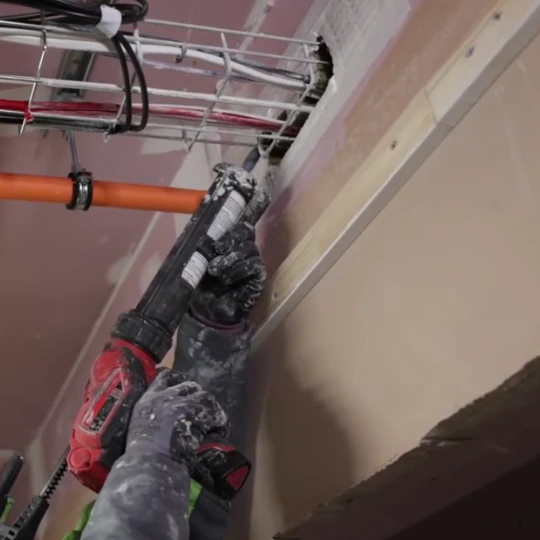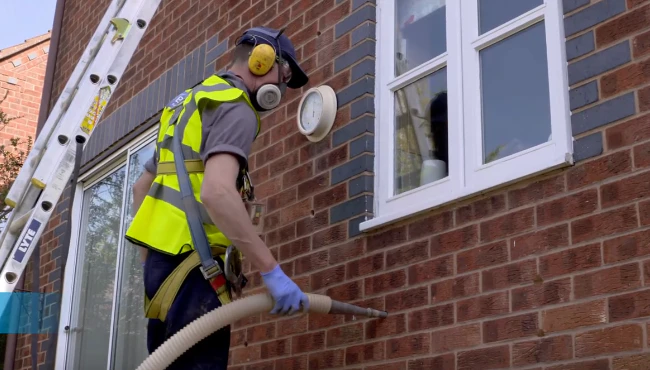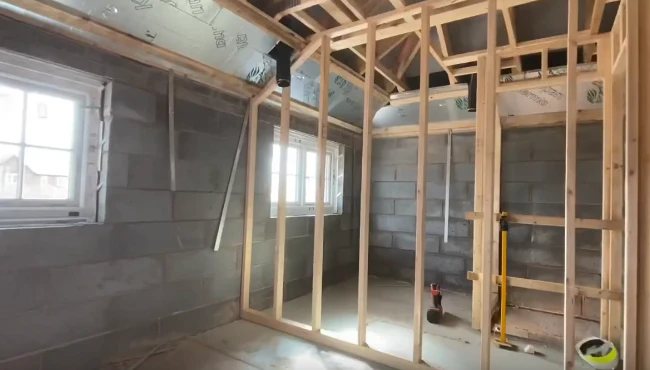What does a fire protection installer do?
A fire protection installer, often referred to as a fire stopper, plays a crucial role in fortifying buildings against the devastating impact of fires. Their responsibilities are diverse and pivotal for ensuring the safety of occupants. Fire stoppers install structural protections like dry cladding, mineral sprays, or intumescent materials. Creating fire-resistant walls and ceiling linings is another feather in their cap, as is the installation of thermal and acoustic insulation, fire seals, cavity barriers, and fire-resistant ducting. Armed with ladders and a keen eye for detail, they ascend to great heights, following technical drawings and plans with precision—all while adhering to stringent health and safety
Required skills
Fire Protection Installers need a set of skills, including attention to detail, physical fitness, ability to work at heights, and proficiency in interpreting technical drawings.

Qualifications
To work in this field, an NVQ Level 2 in Passive Fire Protection is essential. In addition, holding a blue CSCS or gold CSCS card is beneficial as it demonstrates the installer’s competence and commitment to meeting industry standards.
Benefits
Starting a career as a fire stopper brings more than just professional growth. The sense of achievement in protecting lives and property is unparalleled. In addition, the demand for qualified fire protection installers provides a steady stream of employment opportunities. This career path offers stability and the chance to be an integral part of the safety infrastructure.
Challenges
Like any profession, fire protection installers face challenges. Working in different environments, sometimes at considerable heights, requires stamina. Keeping up with evolving fire safety technologies and regulations is a constant commitment. However, when these challenges are met with determination, they contribute to the installer’s personal and professional development.
Career path and progression
The path of a fire protection installer is not static. With increasing experience, you can progress to supervisory or management positions. Specializations in specific areas of fire protection, such as advanced insulation techniques or state-of-the-art materials, provide opportunities to expand expertise. Continuous learning and a commitment to excellence pave the way for a fulfilling and dynamic career.
Statistics
Fire protection installers in the UK* – Prognosis
Average Annual Increase
ARR**
SOURCE: CITB ” Labour Market Intelligence Report (2024 – 2028)”.
* These prognosis calculations assume constant ARR and growth rate without significant external disruptions.
** ARR – Annual Recruitment Requirement is a metric used to estimate the number of new workers needed annually to meet labour market demands in a specific industry, region, or occupation.
How much could you earn as a fire protection installer
Fire protection installers in the UK earn varying wages based on experience and employment status. Entry-level employed workers earn around £16 per hour (£29,000 annually), while experienced ones can earn up to £25 per hour (£50,000 annually). Self-employed individuals charge approximately £22 per hour, with daily earnings ranging from £180 to £240, depending on experience and location.
*Information sourced from reputable recruitment sites and agencies, reflecting the latest job market insights and trends. Figures can vary based on factors such as specific job requirements, individual qualifications, and regional economic conditions. Additionally, self-employed professionals should account for expenses such as tools, materials, insurance, and transportation when calculating their net earnings.
Typical hours per week
Standard work hours per week
(Employed)
Working hours per week with overtime
(Employed and Self-employed)
The typical working week for a fire protection installer is 42 to 44 hours, although overtime is possible depending on project requirements. This profession often involves working on construction sites, so working hours must be flexible to meet project schedules.
Conclusion
Being a fire protection installer is not just a job, it is a commitment to ensure the safety of buildings and human life. With the right qualifications, skills and commitment, you can have a fulfilling career in passive fire protection and contribute to the resilience of buildings against the unpredictable threat of fire.

